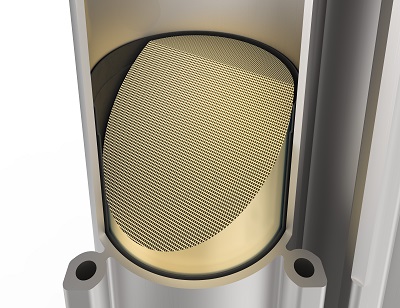Atlas Copco has developed what they call the world’s first completely solid desiccant for air dryers. The material, termed Cerades, will be initially used in its CD 20⁺-335⁺ series of dryers.

Company officials said the new product will revolutionize compressed air drying. Adsorption dryers have previously used containers filled with thousands of tiny desiccant beads to absorb moisture in compressed air. The new drying technology uses a structured desiccant. Cerades consists of solid ceramic blocks that dry the compressed air as it flows through straight, structured tubes. Because the air flow meets very little resistance, this process is much more energy efficient. Compared to the performance of conventional adsorption dryers, this resistance-free air flow significantly reduces energy costs.
In addition to energy savings, other advantages include:
Long life. Unlike the tiny beads that bounce around (and into each other) in a traditional adsorption dryer, structured, solid desiccant lasts a long time. Also, the decaying desiccant beads can negatively impact the dew point and performance of the dryer. Cerades reportedly provides better operational quality and extended maintenance intervals over the long term.
Better air quality. As they break down, desiccant beads produce a fine dust that not only has to be filtered out to maintain a high air quality, but can also compromise the environment and the health of dryer operators. Structured desiccant does not have this problem and delivers its users ISO 8573-1:2010 Class 2 air purity for particles without any extra filtration.
Flexible installation and operation. As a solid ceramic block, Cerades also offers greater installation and operational flexibility. For example, it can be mounted horizontally and is able to handle an inlet temperature of 70°C. This, combined with the fact that it is vibration-resistant and takes up less space, allows a structured desiccant dryer to be used in a wide range of applications, for example in the transportation industry.
More compact. Cerades-equipped dryers are smaller because they can handle a higher airflow. A smaller footprint gives more space and flexibility in the layout of a compressor room.
Atlas Copco
www.atlascopco.com
Filed Under: Pneumatic Tips